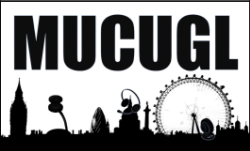Exchange Server 2007 Service Pack 2 details appear and then disappear on Exchange Team Blog?
Microsoft Exchange Server 2007 is the industry’s leading server for e-mail, calendaring and unified messaging. Exchange Server 2007 is the foundation for a dynamic and holistic unified communications experience, and has been designed to meet the challenges and address the messaging needs of today’s businesses. Exchange Server 2007 Service Pack 2 (SP2) enables customers to increase their operational efficiency and it sets the foundation for the transition to Exchange Server 2010, which is expected to be available in the second half of 2009. A public beta of Exchange Server 2010 is available for download at http://www.microsoft.com/exchange/2010.
Customer Benefits
Key new features of Exchange Server 2007 SP2 unveiled today include:
- Enhanced Auditing – New Exchange auditing events and audit log repository enable Exchange administrators to more easily audit the activities occurring on their Exchange servers. It allows the right balance of granularity, performance, and easy access to audited events via a dedicated audit log repository. This simplifies the auditing process and makes review of audited events easier by segregating audited events in a dedicated location.
- Exchange Volume Snapshot Backup Functionality – A new backup plug-in has been added to the product that will enable customers to create Exchange backups when a backup is invoked through the Windows Server 2008 Backup tool. Exchange Server 2007 didn’t have this capability on Windows Server 2008 and additional solutions were required to perform this task.
- Dynamic Active Directory Schema Update and Validation – The dynamic AD schema update and validation feature allows for future schema updates to be dynamic deployed as well as proactively preventing conflicts whenever a new property is added to the AD schema. Once this capability is deployed it will enable easier management of future schema updates and will prevent support issues when adding properties that don’t exist in the AD schema.
- Public Folder Quota Management – SP2 enables a consistent way to manage quotas by improving the current PowerShell cmdlets to perform quota management tasks.
- Centralized Organizational Settings – SP2 introduces new PowerShell option that enable centralized management of many of the Exchange organization settings.
- Named Properties cmdlets – SP2 enables Exchange administrators to monitor their named property usage per database.
- New User Interface for Managing Diagnostic Logging– SP2 enables Exchange administrators to easily configure and manage diagnostic logging from within the Exchange Management Console.
Pricing and Availability
SP2 is available at no additional cost to customers that have purchased Exchange Server 2007. SP2 is slated for release in the third quarter of 2009. More information on Exchange Server 2007 SP2 will be available on the Exchange Server Web site at http://www.microsoft.com/exchange on the release date.
FAQ
Q: Is Exchange 2007 Service Pack 1 a pre-requisite for Service Pack 2?
No. SP2 can be installed in any of the following modalities:
a. A fresh install with Exchange Server 2007 SP2
b. In-place upgrade from Exchange Server 2007 to SP2
c. In-place upgrade from Exchange Server 2007 SP1 to SP2
Q: Will the Service Pack 2 be required for Exchange 2007 to interoperate with Exchange Server 2010?
Yes, Exchange Server 2007 SP2 is required to interoperate with Exchange Server 2010 and to enable the transition of services to the latest version of the product.
Q: Is Microsoft planning any change to its service pack support policy for customers who are not planning to deploy this Service Pack 2?
Microsoft mainstream support policy for Exchange Server 2007 remains unchanged. Microsoft will continue providing support and Update Rollups to customers running SP1 for 12 months after SP2 ships. See our Service Pack Support Policy for more details.
Q: Can customers decide to skip Service Pack 2 if they are not planning to deploy Exchange 2010 and wait for the next version of the product?
Given the benefits SP2 provides, Microsoft recommends customers deploy SP2, so they can immediately benefit from the operational efficiency improvements and Update Rollups that generally address hotfixes, security and critical updates for the product. Ultimately it is customer’s decision on the timing to apply the service pack and Microsoft will support those customers in alignment with the Service Pack Support Policy.
Q: Is this the first time that you’ve required customers to adopt the most recent service pack before they can upgrade to the new version of Exchange?
Customers will be able to apply the pre-requisites for Exchange Server 2010 independently of SP2. However, SP2 will be the minimal requirement for interoperability scenarios of the two products.
Source: here (currently broken as article seems to have been pulled?) URL updated




